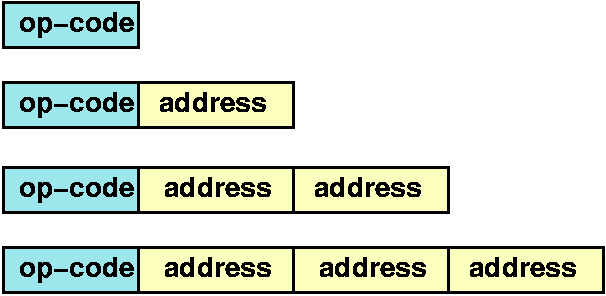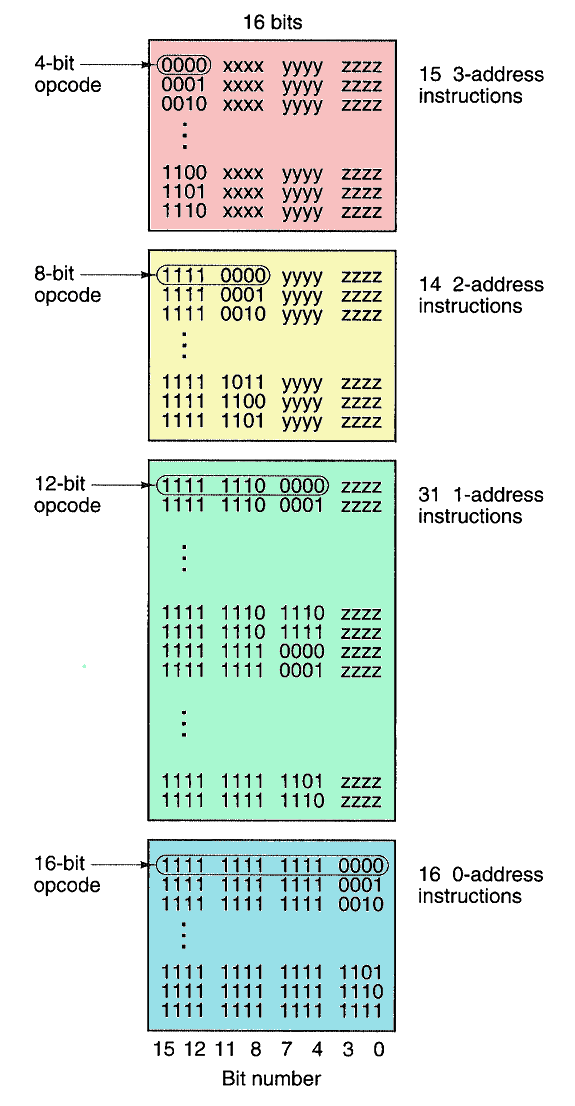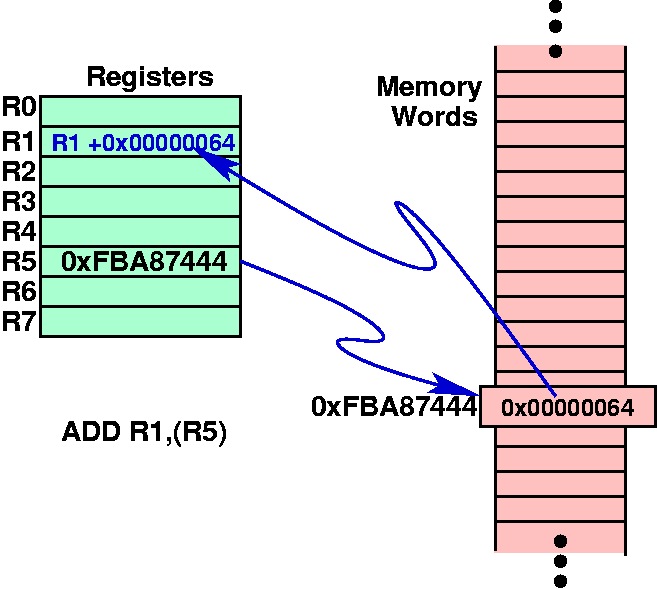

Machine Data Types | ||
|---|---|---|
| Pentium | UltraSPARC II | JVM |
|
|
|

|
|


| 4-bit op-codes (14) | 6-bit op-codes (7) | 9-bit op-codes (8) |
|---|---|---|
0000 aaa aaaa aaaa
0001 aaa aaaa aaaa
0010 aaa aaaa aaaa
0011 aaa aaaa aaaa
0100 aaa aaaa aaaa
0101 aaa aaaa aaaa
0110 aaa aaaa aaaa
0111 aaa aaaa aaaa
1000 aaa aaaa aaaa
1001 aaa aaaa aaaa
1010 aaa aaaa aaaa
1011 aaa aaaa aaaa
1100 aaa aaaa aaaa
1101 aaa aaaa aaaa
|

ADD R1,R2,R3 # same as R1 = R2 + R3 or R3 = R1 + R2
ADD R1,R2 # same as R1 := R1 + R2
ADD R1 # same as ACC := ACC + R1
MOV R1,4
MOV R1,R4
|

|
MOV R1,R4
|

|
| "...the Pentium II's standard assembly language syntax (MASM) verges on the bizarre..." --- A.S. Tanenbaum |
MOV R1,#0 ; accumulate the OR in R1, initially 0
MOV R2,#0 ; R2 = index, i, of current product: A[i] and B[i]
MOV R3,#4096 ; R3 = first index value not in use
LOOP: MOV R4,A(R2) ; R4 = A[i]
AND R4,B(R2) ; R4 = A[i] AND B[i]
OR R1,R4 ; OR all boolean products into R1
ADD R2,#4 ; i = i + 4 (stpe in units of one word (4 bytes)
CMP R2,R3 ; are we done yet?
BLT LOOP ; if R2 < R3, we are not done, so continue
|
MOV R1,#0 ; accumulate the OR in R1, initially 0
MOV R2,#0 ; R2 = index, i, of current product: A[i] and B[i]
MOV R3,#4096 ; R3 = first index value not in use
MOV R5,#A ; R5 = address of A
MOV R6,#A ; R6 = address of B
LOOP: MOV R4,(R2+R5) ; R4 = A[i]
AND R4,(R2+R6) ; R4 = A[i] AND B[i]
OR R1,R4 ; OR all boolean products into R1
ADD R2,#4 ; i = i + 4 (stpe in units of one word (4 bytes)
CMP R2,R3 ; are we done yet?
BLT LOOP ; if R2 < R3, we are not done, so continue
|
|

|